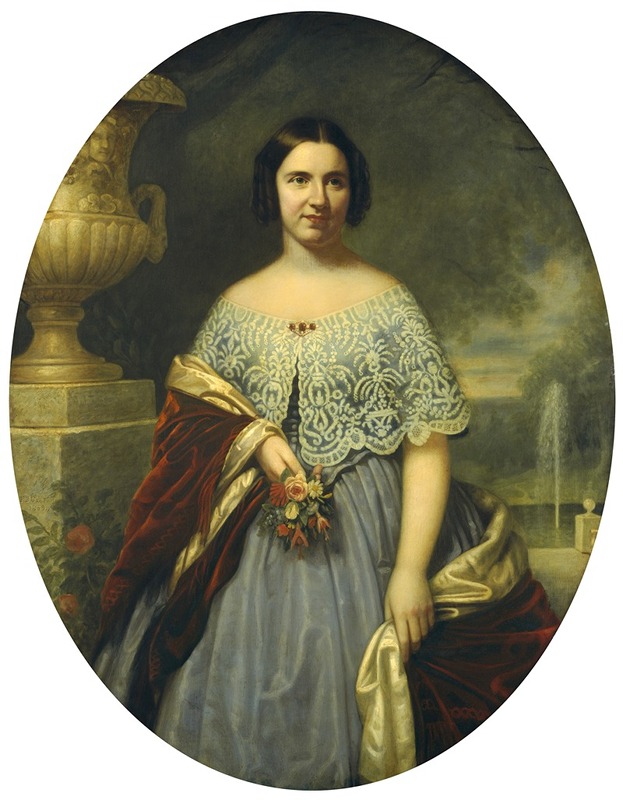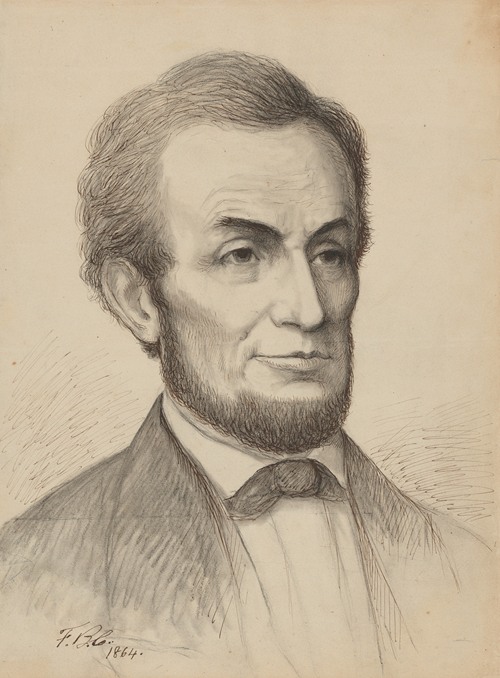

Francis Bicknell Carpenter was an American painter born in Homer, New York. Carpenter is best known for his painting First Reading of the Emancipation Proclamation of President Lincoln, which is hanging in the United States Capitol. Carpenter resided with President Lincoln at the White House and in 1866 published his one volume memoir Six Months at the White House with Abraham Lincoln. Carpenter was a descendant of the New England Rehoboth Carpenter Family.
Carpenter was born to Asaph Harmon and Almira Clark (1801-1885). He was one of nine children.
On January 6, 1853 Francis married Augusta Herrick Prentiss (1831-1926).
In 1844, after showing his father a painting of his mother that the former viewed as a success, Carpenter was allowed to go to Syracuse, New York for six months to study under Sanford Thayer. In 1848, at age 18, he was awarded a purchase prize by the American Art-Union. By the age of twenty-one, Carpenter established a studio in New York City. Carpenter was elected to the National Academy of Design as an associate member in 1852.
In 1852, Carpenter was commissioned to paint a portrait of President Millard Fillmore, a fellow upstate New Yorker born in Cayuga County. Commissions followed for portraits of Presidents Franklin Pierce and John Tyler, and other mid-19th century notables, including the clergyman Henry Ward Beecher; newspaper editor Horace Greeley; Ezra Cornell, founder of Cornell University; James Russell Lowell, poet; and John C. Fremont, the first Republican presidential candidate.
According to his memoir, Six Months at the White House with Abraham Lincoln, Carpenter was deeply moved by Abraham Lincoln's Emancipation Proclamation, calling it "an act unparalleled for moral grandeur in the history of mankind." Carpenter felt "an intense desire to do something expressive of appreciation of the great issues involved in the war." Carpenter, having formulated his idea for the subject of the painting and outlined its composition, fortuitously met Frederick A. Lane, a friend who recently had earned a large amount of money. Bankrolled by Lane, and through the influence of Samuel Sinclair of the New York Tribune and Representative Schuyler Colfax of Indiana, Carpenter gained Lincoln's assent to travel to Washington and work with him on the painting. Carpenter met with the President on February 6, 1864, and then began work.
Carpenter began with many sketches of Cabinet members and of Lincoln himself, working from life, as Lincoln worked, and from photographs taken by Mathew Brady of Lincoln and members of his Cabinet. Carpenter was given free access to Lincoln's White House office for the former purpose, and the State Dining Room was given him for a studio. On July 12, 1864, Lincoln led his cabinet into the State Dining Room to view the completed work.
When Lincoln had the painting exhibited to the public in the East Room of the White House, Carpenter noted that the exhibition was thronged with visitors. Carpenter campaigned for Congress to purchase the painting, enlisting the help of fellow Homer native William O. Stoddard, Lincoln's private secretary. Congress did not appropriate the money. The painting remained in Carpenter's possession until 1877, when he arranged for Elizabeth Thompson to purchase it for $25,000 and donate it to Congress. A joint session of Congress was held in 1878, on Lincoln's birthday, to serve as a reception for the painting, with the artist present.
Following Lincoln's assassination, Carpenter produced many portraits of Lincoln and his family; some based on memory, others on photographs provided by Lincoln's widow. Carpenter's skills were in decline by this time. One admirer of Carpenter's early work even wondered if a later portrait of Lincoln was a forgery.
Among the notable portraits painted by Carpenter, aside from Lincoln, were those of President Fillmore and Governor Myron H. Clarke, painted in the New York City Hall; Horace Greeley (a portrait owned by the Tribune Association); Asa Packer, founder of Lehigh University; James Russell Lowell; New York banker David Leavitt; Dr. Lyman Beecher; Henry Ward Beecher and others.
By the late 1870s, Carpenter became increasingly interested in religion and spirituality; art historian Mary Bartlett Cowdrey believed "that religious obsession somehow undermined Carpenter's work". Carpenter died in New York City—a brief obituary appearing in The New York Times misstated the title of his most famous work.
Carpenter died of "dropsy" an old-fashioned term for Edema on May 23, 1900 in New York and was buried in Glenwood Cemetery, Homer, Cortland County, New York.

